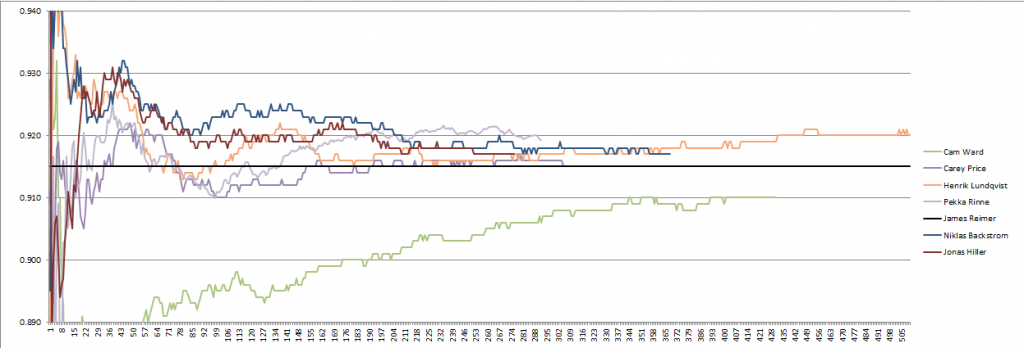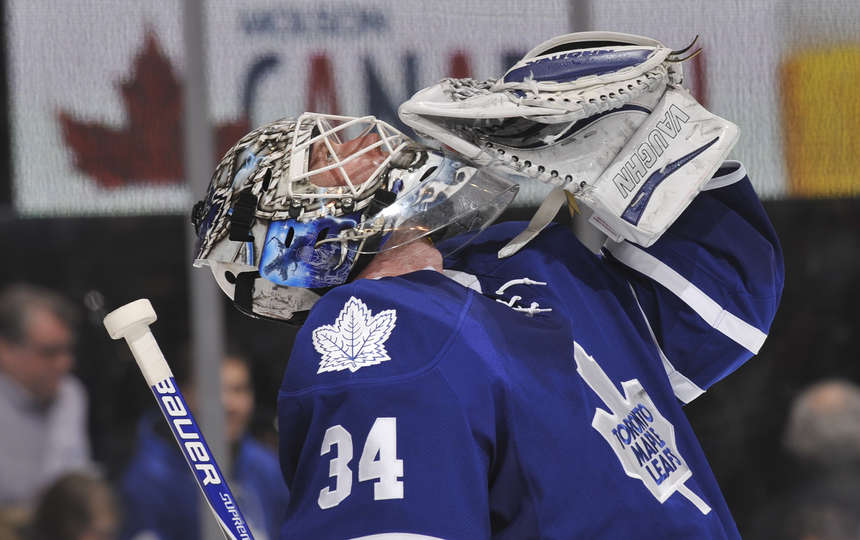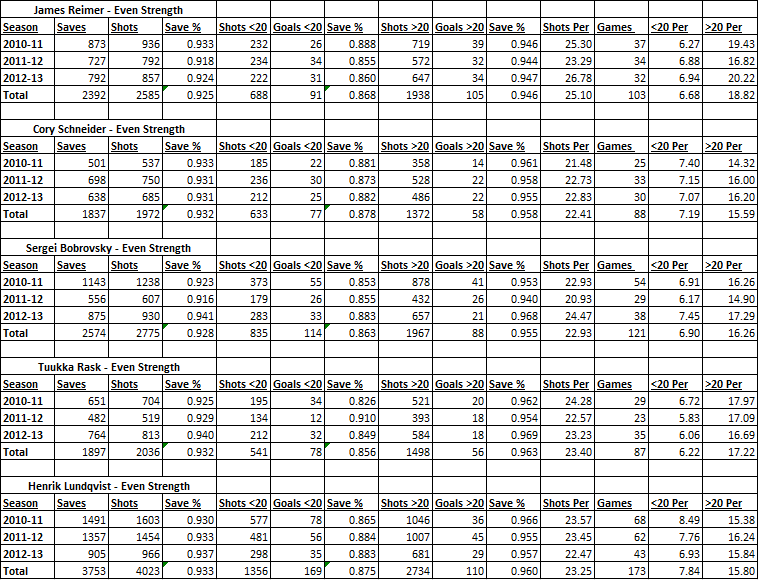Reimer, Reimer, gotta be startin’ Reimer.
The Dave Morrison Connection
No secret to any hockey fan older than Rebecca Black is that Toronto Maple Leafs have a long history of poor scouting, drafting, and player development. Back in 1989, the Leafs had three first round picks of which to restock their prospect cupboard and build for the future. Instead, the budget was cut and the scouting director at the time was told to focus on one junior team and one team only – the Belleville Bulls of the Ontario Hockey League.
The 1989 draft was noted for its abundance of serviceable hockey players on up to Hall of Famers; among whom were Adam Foote, Bobby Holik, Stu Barnes, Bill Guerin, Olaf Kolzig, Niklas Lidstrom, Robert Reichel and Sergei Fedorov. All were available to the Leafs at the time of their turn to pick, none were selected by their draft team. Drafted were Scott Thornton, Rob Pearson and Steve Bancroft. Barely 1,200 NHL games were played among the three of them.
Writer’s post note: https://twitter.com/Hope_Smoke/status/330690067817455616 — Hope_Smoke tweeted that the Leafs had an opportunity to select Fedorov with the 66th pick, but Ballard said no.
Things didn’t really improve from that draft on. When the Leafs actually kept their first round picks, they drafted injury prone junior stars, first round busts, or simply traded away their good prospects for another team to develop.
That stretch of mediocrity began to change for the better in 2004. The quiet hire of David Morrison as an amateur scout set the table for what would become the Leafs most successful draft. The son of the 1950s all-star defenseman Jim Morrison, Dave had the brains and pedigree to take his game to the next level. However, Morrison was barely treading water professionally. Not skilled enough to stick in the NHL and making the bare minimum in the AHL, Morrison moved to Europe where he finished out his career as a journeyman professional hockey player.
But somewhere along the way, Morrison picked up the nuances of the game and through adversity and pitfalls, learned what it took to be a professional hockey player and how to find them.
Upon Morrison’s player retirement in 1999, he was immediately hired as an amateur scout within the Vancouver Canucks’ organization – under the leadership of Brian Burke. After several years of service, Morrison moved on to the Leafs’ organization where he quickly moved up the scouting department ranks, culminating in his promotion to the Leafs’ scouting director in 2006.
Since taking over as scouting director, the results of Morrison’s drafts are encouraging. Of the seven picks taken in the 2006 draft, six have played NHL games and four have played 100 or more. It gets better – almost all the Leafs picks in the first few rounds since 2006 are playing at the AHL level under the steady tutelage of Dallas Eakins or playing in the NHL. The prospect system is overflowing with an abundance of riches.
And since the 2006 draft, fifteen of those players selected by Morrison are about to suit up for first or second playoff run with the Toronto Marlies. Eleven are already playing regular shifts in the NHL.
But this isn’t about Morrison per se. This is about the fourth pick he made back in 2006.
“… and with the 99th overall pick, the Toronto Maple Leafs are pleased to select, from the Red Deer Rebels of the Western Hockey League, goaltender James Reimer.”
Reimer was raised in a small hamlet outside of the Winnipeg city limits called Morweena. His first brush with hockey came when his older brother needed someone to practicing shooting on. From there, Reimer’s ascent to the Leafs’ starting goaltender has become a thing of legend – having not played organized hockey until he was 12, he was drafted by the Red Deer Rebels in the 4th round of the 2003 Bantam Draft and almost released. After several attempts, Reimer finally made the team and from then on, plied his trade quietly.
Mere months after finishing his junior career, Reimer was sent down to the minors where he languished in the obscurity of the ECHL. It wasn’t until the following season that he cemented a spot with the Toronto Marlies.
It was as if lightning was caught in a bottle. Reimer made quick work of the opposition before falling prey to an unusual goaltending carousel with three other players, including the veteran journeyman Joey MacDonald.
In 2010-11, a quick start to the season in the AHL earned Reimer a temporary call-up to the Leafs. On December 20, 2010, Reimer made his NHL debut and stopped all four shots he faced. On January 1st, 2011, Reimer finally earned his first start and stopped 32 of 33 shots on his way to earning his first NHL win.
More than two years later, all 25-years of Reimer stands among the league leaders in every significant goaltending category. Among goaltenders who have played 30 games or more, he is 5th in save percentage, 8th in goals against average, 12th in wins, 2nd in shutouts, and 15th in shots faced having played the fewest games among the top 15.
Reimer is officially the Toronto Maple Leafs’ franchise goaltender.
But…
Reimer’s ascent to franchise goaltender status hasn’t come without some valleys along the way. In 2011-12, a vicious head hit from Brian Gionta felled Reimer for half the season and he was diagnosed with a concussion. He was never able to bounce back from the lingering effects that season.
More recently, Reimer strained his knee and missed a couple of weeks. While Reimer’s injury history is questionable, his stamina isn’t – he does have a strong background of playing as the starter for each team he has played on. It’s not so much that his low number of games played suggests that he is injury prone as much as it is the Leafs not having had an idea of which goaltender to commit to until this season.
Although he has yet to have played more than 37 games in one seasons with the Leafs, Reimer has shown more than just flashes of being a technically excellent goaltender with a strong glove, good reflexes, and above average post to post lateral movement.
How does he stack against other NHL starters?
A look at Reimer’s game by game career save percentage performance reveals several interesting results when compared to well-known goaltenders with similar experience. The comparison deals directly with goaltenders that have started after the first lockout and have a similar age-to-upside ratio. From recent vintage:

The numbers are at the point where we can somewhat infer that Reimer’s save percentage will be around or above the .915 range for the next 50 games. Beyond 150 games is where it gets a little trickier. As for goaltenders with more than 150 games of experience and no more than 300:

Among goaltenders with beyond 300 games experience:

The trend is clear. When a goaltender performs at or above a .910 save rate in their first 100 games, he tends to hold or improve on his numbers.
For example: Price, Crawford, Quick, and Pavelec were ~.910 goaltenders in their first 100 games. Then, three of the four started to improve. Bobrovsky, Rinne, Lundqvist, Niemi, and Varlamov are goaltenders who played around the ~.915 range – all but Varlamov have improved over time.
Note: The league average tends to play a role here – it has climbed from .901 in 2005-06 to .912 in 2013. This suggests that quality goaltenders play at or slightly above the league average of .912 today. Playing substantially above the league average puts a netminder in rare company – see: Reimer’s .924 save percentage this year and his .921 in his first year).
What can we take from all this? There’s a pretty interesting correlation that goaltenders who start out playing above the league average tend to sustain or improve slightly over time. We should expect Reimer to sustain his play, so long as the Leafs continue to age well into their prime years and management continues to add more talent in front of Reimer.
In the rarefied air of quality goaltending
While Reimer had a down-year in his second season, most of his struggles can be attributed to his long recovery from the lingering effects of a concussion and the media hysterics surrounding it. A closer look is necessary to understand what makes Reimer an increasingly special player. The recent trend of advanced statistical barely applies to goaltenders, but there are ways to view the numbers in distinctive formats without conflating disparate raw data – such as shot distances.
A noteworthy annotation to the 150-game chart is that Reimer’s first 100 games connect strongly with well-regarded goaltenders like Bobrovsky, Rask, and Schneider. This season has all four goaltenders in the top-ten for save percentage and all are 26 years old or younger. Also in that category is Henrik Lundqvist, who furnishes this list with what a consistently productive goaltender provides to his team. So let’s take a look at all five goaltenders.
The even-strength data is split into two categories – shots against within 20 feet and shots outside of 20 feet. The thinking is that the most dangerous areas of the ice will always be shots taken close to the net – the further out the more likely the goaltender (or defense) has time to react to a shot. By splitting this data into two equally distributed categories, we can gauge how consistent Reimer is among his peers.
A look at the chart confirms Reimer has been holding steady with his career save percentage from 20 feet and out. He’s also trending back up slightly in his save percentage from 20 feet and in. Of the four young goaltenders on this list, Reimer ranks second for save percentage on shots from 20 feet and in.
More impressively, Reimer’s save percentage from 20 feet and in is almost .020 higher than the league average of .842 this season. This suggests that he’s consistently able to track the puck, get in perfect technical position, and shut down good scoring chances in front of him – and his proficiency seems to be climbing.
However, there is an absurdity in the number of shots he faces per game – over the last three years he has taken on almost two more shots per start than anyone on that list. Curiously, the Leafs have a propensity to give up a lot of shots from outside 20 feet – this season, Reimer has faced over three more shots per game compared to his peers.
A quick glance and calculation of total shots taken from outside 20 feet confirms this – 825.5 total shots per team, with the Leafs taking on 995 over the course of the 48 game season. That’s 3.53 extra shots per game taken on the outside of the 20 foot area of the net.
Put another way – the league average of even-strength shots per game is 24.17. Reimer has faced roughly 10% more shots per game above the league average.
In another context, this year’s league average even-strength save percentage was .9199. In 2011-12, the league average was 0.9205. In Reimer’s first season, the league average was 0.9216. In two of Reimer’s three seasons, he has provided the Leafs with well-above-league-average goaltending while facing significantly more shots per game than the league average. Reimer has provided the Leafs with indisputable quality goaltending and is, without a doubt, a starting goaltender in the NHL.
So what’s with the discrepancy between Reimer’s save percentage from 20 feet and out compared to his peers?
My sense is that it has a lot to do with the system Carlyle has and Wilson had in place – both are known shot-blocking proponents. There’s a higher probability that attempts to block shots can have the adverse effect of being tipped into a scoring chance. The more scoring chances, the more likely the other team will score. However, there is a sizeable difference between the two defensive systems between both coaches, but I will get into that for the second instalment of who James Reimer is and the challenges he has had to face.
Let’s hear your comments.



































Comments are closed.